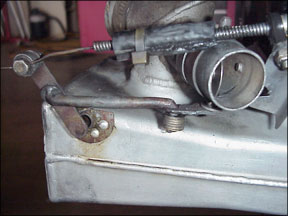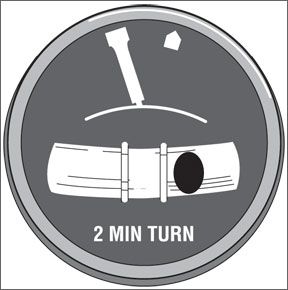I just got around to reading the July 2010 issues “Yaw Adversity.” I never write to magazines, but Mark Hutchins response to Tom Turners article made me grab my “pen.” In response, I would argue rudder is a primary and aileron is a secondary yaw-correcting control. 288 Most pilots never experience crosswind landings in a plane that really cares, like a Cub, Taylorcraft or Citabria. In such a plane, in a crosswind on takeoff or short final, I wouldnt advise the pilot to focus on secondary correction effects to put the nose where they want it. The result is likely to be losing the centerline of the runway. Once you find the bank angle keeping you on the centerline, use the rudder to correct the nose. Also, many planes use differential aileron throw or other design techniques to minimize adverse yaw. In those cases, little nose correction can be had using ailerons, especially at slow speed. The pilot should know if that has been designed into his plane. To sum it up, Mark Hutchins technique sounds great for a non-crosswind takeoff or landing in a plane with a lot of adverse yaw. Thanks! Rick Freeman Putting It Down A couple of things disturbed me about Septembers “From Denial To Final, II.” The author spends most of the article talking about “maximum performance,” or “best glide performance.” The assumption is you want to go as far as possible and stay aloft as long as possible after an engine failure. Intuitively, it makes sense. If we are already close to a landing area, it gives us time to prepare, and the graphic on Septembers page 14 demonstrates how to get down when were there. However, the focus on reducing drag for this purpose may be misplaced in some situations. The ultimate objective is to land in the best place at the lowest speed. Lowest speed means more drag. If Im not mistaken, once you pull a constant-speed prop, I dont think you can get that drag back again with the engine out. Other aspects of a particular engine-out emergency may mean you want to think carefully about drag and how important “glide performance” really is. Can you get those flaps down again after sacrificing them for “best glide?” If the selected landing area is nearby, I think I would want to get all the drag out there I could as early as I could, with the possible exception of the wheels. 288 Related to this is ignoring water as a preferred emergency landing site. Water is a stable, known surface, never has wires or other dangers, and wind direction is usually obvious. In many cases, there are lots of people around to help. Compare this to the lonely field, remote hillside or roadway. The key to considering water for an emergency landing is preparation. If you are smart enough to have any rescue gear in your plane at all, why not life jackets and other equipment for ditching? Water landings are almost always survivable, there is no chance of post-crash fire, much less chance of impact injuries, and in shallow fresh water, even the plane may be recoverable and repairable. In a perfect world, calm water should be one of the top choices for a forced landing, using all the drag (except wheels) you can muster. A well-known pilot put his commercial jet in the Hudson recently for just this reason. Brian Barbata Theres no question availability of a nearby landing area may make counterproductive extending an engine-out glide. The only time weve had to do this in anger, we ended up doing 360-degree turns over our “key” position to shed altitude, dropping gear and flaps only when we had the runway made. If we had it to do over again, wed do the same thing. Water may be an ideal surface on which to land, depending. Among the many factors wed want to evaluate before committing a landplane to water are the availability of nearby potential hard-surface landing areas and our passengers ability to egress. However, because of concerns about the design flipping inverted on splashdown, wed be much less willing to intentionally put down a fixed-gear airplane on water if there were other choices. Finally, the ability to return a constant-speed prop to its high rpm/low pitch/high drag position also depends on a variety of factors, not least of which are system design and available engine oil pressure. With catastrophic engine failure, the option to pull the prop may not exist in the first place. More On Putting It Down There is an addition to make to Tom Turners fine article. I have only one example, 288 due to my limited experience. Except for initial training, most of my time, 3000 hours, has been in one airplane, a 1964 Mooney M20D, converted to a “C.” The POH says nothing about it, but the carbureted Lycoming O-360 A1D does have alternate air: Applying carb heat also opens a valve in the engine compartment to bypass the intake filter. One winter I needed to get to Salt Lake from Reno. Weather was worse than forecast over mid-Nevada where there were no reporting stations, so I went farther south and climbed to 16,000 feet where temperatures were below -20 F, and called for a clearance eastbound. All was well in the clouds for some time but, momentarily, I hit a rising column of warm, moist air, which immediately iced over the windshield and the intake filter. Power ceased. There was almost no airframe ice. The cause was obvious because of knowing the equipment. I pulled carb heat and restored most of the power. All I could then hold with the warmer intake air was 15,000 feet. I soon broke out to the east of the weather, the ice sublimed, and I restored full power. The rest of the trip to SLC was without incident. This may not have been a life-saver for me as there were a few small holes in the clouds below. I dont know the surface temperature-the ice could have melted-but I was very glad not to have to find out. At a minimum it would have been a bothersome delay and it could have caused a forced landing, or worse. The only thing really getting my attention was the ATC question: “How many souls on board?” You really cant say too much about knowing how your equipment works! Lin Manning Good story; thanks. Applying carb heat is analogous to alternate air in many ways and this is one more of them. Weve also heard of forcing a backfire out through the intake system, melting any ice in the way. Of course, another solution might be to avoid such conditions.
Via e-mail
Hawaii
Via e-mail




